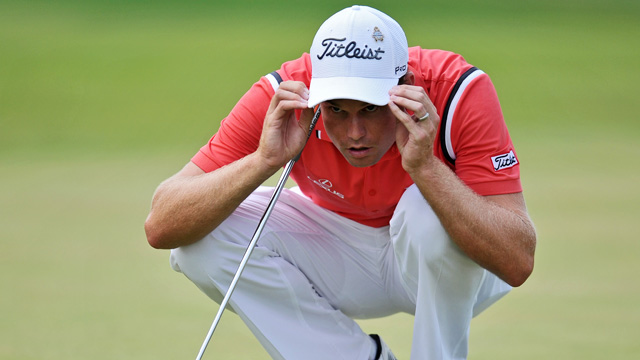NEWS
A Lesson Learned: Seeing your putting improve

Nick Watney’s recipe for success at the AT&T National included some amazing feats. One was in the third round setting a course record of 62, having two bogeys and beating the record by two shots. Another was having a bogey free round of 66 on the final day. Many facets of the game have to be mastered to land in the elite company of a PGA Tour Champion. But, finding a great putting routine can save many strokes. Nick’s address routine for putting is the week’s A Lesson Learned.
As seen over every putt this week, Nick has a very precise and very repetitive putting routine. When Nick begins taking his practice stroke, you will find his eyes burning a mental picture of the hole on his brain. Most of the time, this picture is taken twice with two separate glances. When his eyes return to his putter, he makes two continuous strokes as if the putter is not allowed to stop moving. During this time, he’s creating a swinging motion that would create enough power to get the ball to its destination. In keeping the practice swing continuous, the ball will never become a destination. A great way to create a yippy putting stroke is to focus on hitting the ball, instead of creating a stroke where the ball simply gets in the way.
When Nick completes the practice strokes and is ready to go, he steps to the ball, takes a final glance, and does his best to make a stroke that repeats the practice stroke. An important part of this process is the length of time that his eyes spend on the ball when they return to it. I’ve seen amateurs napping over putts more times than I can count. When the final glance at the hole is made, there is a limited amount of time that the brain will store a clear picture and remember the distance to the target. The picture of the target will fade if the eyes linger over the ball prior to making the stroke.
A great practice routine for putting is to require the stroke to begin immediately, when the eyes return to the ball. It’s a way to make the body react to the target. Nothing good can come from falling asleep over a putt. It gives you too long to figure out ways that you can miss it.
